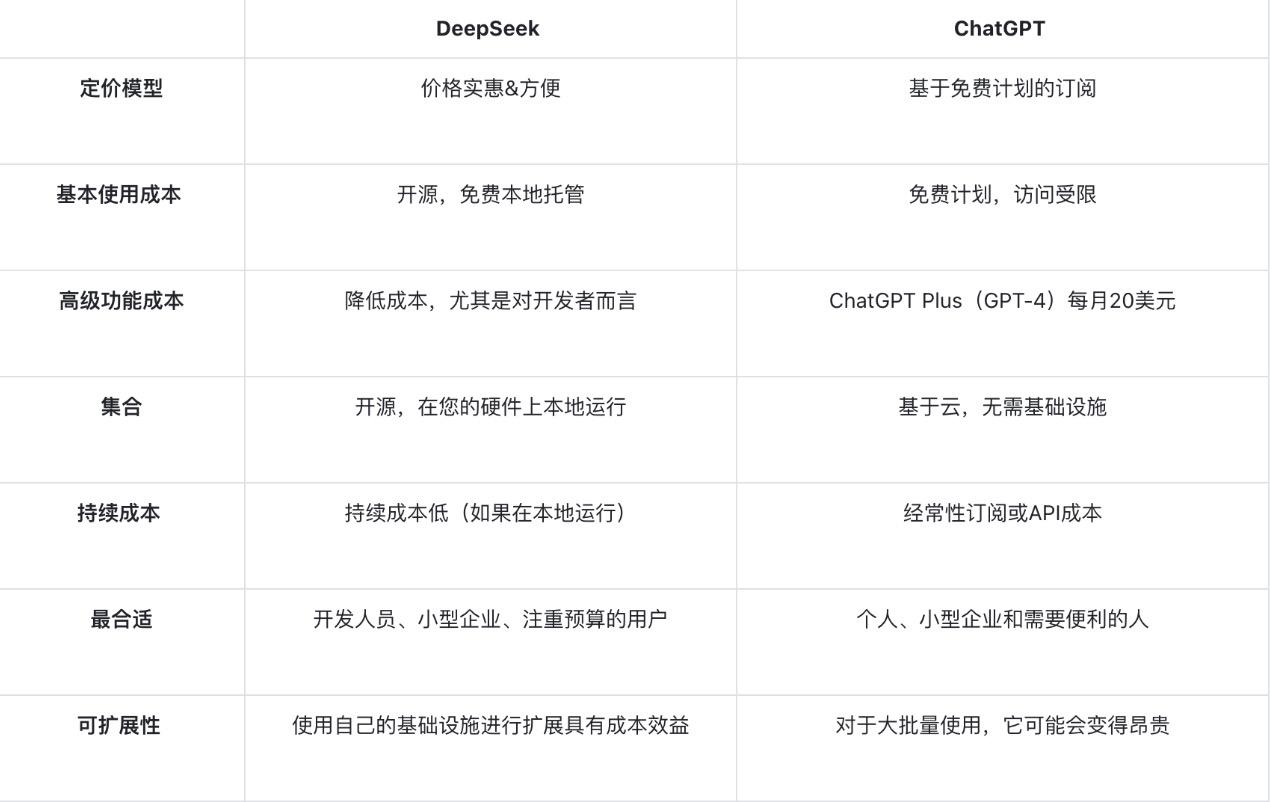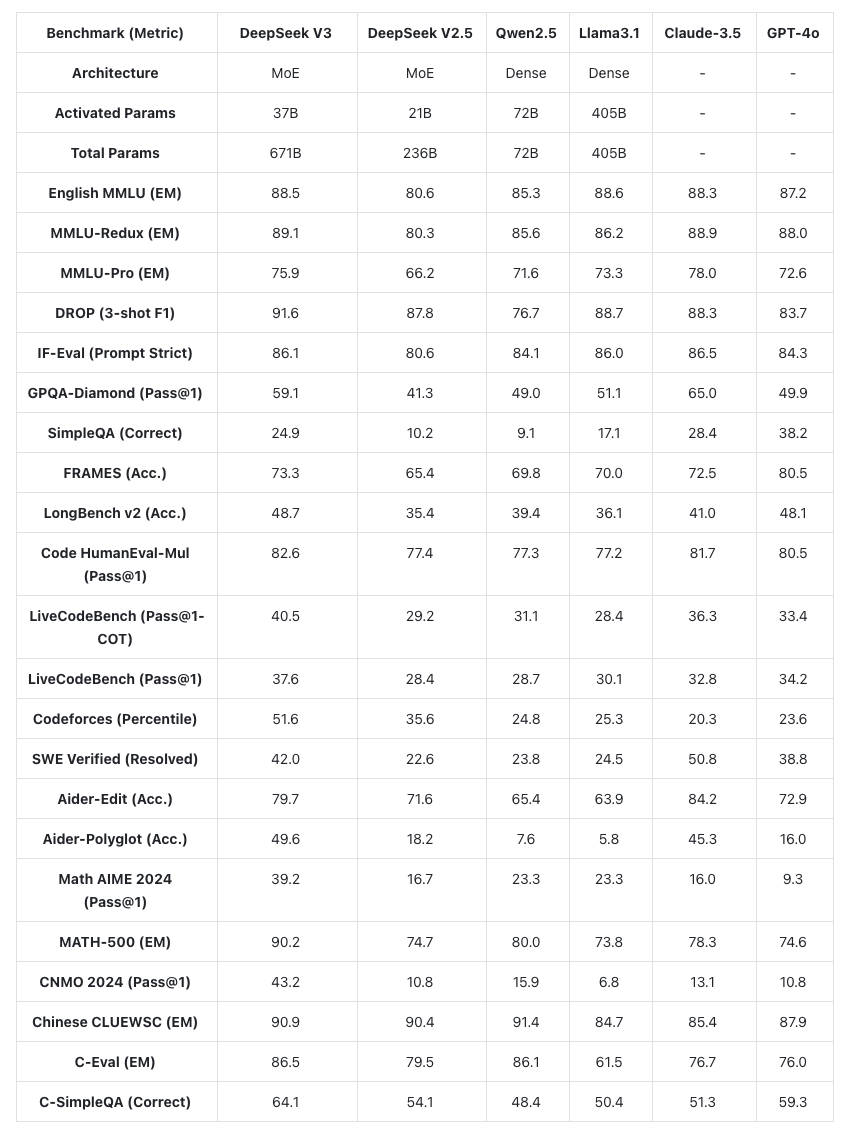DeepSeek is taking the world by storm: Let’s compare it to ChatGPT
DeepSeek is taking the world by storm. Soon, it has become a major competitor to leading AI tools like ChatGPT. Despite having different building philosophies, both technologies offer sophisticated conversational AI. While ChatGPT dominates the market, DeepSeek offers a new wave of AI potential by introducing a new way of processing language.
It is estimated that the AI market will change dramatically in the next 10 years, so the prospects are bright. Here, utilities such as DeepSeek have the potential to disrupt the existing order. It has enough power to test the limits of AI. Let's take a look at DeepSeek's unique features and see how it compares to ChatGPT.
Watch out!!! There is a new artificial intelligence
DeepSeek and ChatGPT have similar advantages, but their underlying technologies are very different. ChatGPT, created by OpenAI, adopts a transformer model for extensive conversations. It excels at generating logical and context-aware replies.
DeepSeek, on the other hand, aims to increase the specificity and depth of its responses. Its methodology is designed to go deep into topics, making it ideal for industries that require precise technical knowledge. DeepSeek offers a compelling option for organizations that want a deeper level of engagement.
While ChatGPT is widely used for a wide range of purposes, DeepSeek is carving out a niche for companies that need more personalized and in-depth interactions. Before choosing the best AI solution, it’s best to grasp the pros and cons of each tool.
How does DeepSeek work? A brief discussion of its basic technology
Are you wondering what DeepSeek does? It is an innovative Large Language Model (LLM) that can process and generate extremely accurate and context-rich material. DeepSeek has a very specialized training method that is different from its competitors. It is more suitable for the technology, business and logistics fields because it absorbs a large amount of data that is unique to each industry.
DeepSeek's architecture is based on contemporary neural networks. This allows the model to process data that emphasizes complex technology and real-time information in addition to generating text. The end result is that AI can more accurately provide highly relevant, targeted information.
The ability to use DeepSeek for industry-specific applications is revolutionary for business owners and decision makers. DeepSeek's powerful training model enables efficient AI-driven discussions that are customized to meet certain business needs. Compared to more general models such as ChatGPT, this approach provides unparalleled flexibility and can be quickly adapted to new domains.
Detailed breakdown of DeepSeek Working Model (LLM) functionality
The sophisticated Large Language Model (LLM) that powers DeepSeek excels at providing context-aware, highly relevant results. Let’s take a look at it in action:
Data Ingestion
To ensure that DeepSeek has a deep understanding of specific topics, it was trained on a wide range of datasets from a variety of businesses.
Professional processing
It does this by fine-tuning responses using a unique algorithm to focus on the information most relevant to business needs.
Neural Networks
DeepSeek uses deep neural networks to power its LLM, which can generate and understand text more accurately.
Context-aware responses
It evaluates the context of each query to provide highly detailed, industry-specific responses.
Constant Learning
The model adjusts and learns from new data, ensuring its conclusions are consistent with information and trends.
High scalability
DeepSeek's architecture is designed to manage complex queries and grow with expanding business needs.
Thanks to this advanced approach, DeepSeek can generate customized, industry-specific information to provide organizations with better conversational AI capabilities.
DeepSeek vs. ChatGPT: Price Comparison

In the long run, DeepSeek costs less, especially if you can host it locally. Also, while ChatGPT's cloud-based access is convenient, membership costs can add up.
What DeepSeek-V3 can do
Let's compare the features and performance of DeepSeek-V3 with its competitors.

Are you impressed by DeepSeek? Let’s move on to discussing its important features.
Key Features of DeepSeek DeepSeek provides cutting-edge capabilities tailored for specific industries.
It ensures context-driven responses by leveraging domain-centric datasets.
Its real-time learning can adapt to changing conditions, such as those in the financial or logistics fields. The AI is suitable for enterprise applications and offers complex integration. These features make DeepSeek a solution for enterprises that require accuracy.
Who will win the AI race?
DeepSeek could challenge ChatGPT's dominance. Industry executives are attracted to its emphasis on accuracy and subject matter knowledge. DeepSeek's specialized approach fills an important gap, while ChatGPT excels at general-purpose work. Moreover, as artificial intelligence advances, DeepSeek's versatility and accuracy could make it a major force in enterprise settings.
DeepSeek vs. ChatGPT
ChatGPT is a flexible tool designed for a broad audience. DeepSeek, on the other hand, specializes in highly precise industry-specific solutions. ChatGPT's strengths lie in creative and informal applications, while DeepSeek excels in professional fields by providing real-time learning and contextual depth. The choice between them depends on whether you need broad or targeted functionality.
Some user reviews of DeepSeek
DeepSeek has both pleasantly surprised and unpleasantly surprised many people around the world. Those who were pleasantly surprised were impressed by its flexibility and affordability. U.S. President Donald Trump said DeepSeek's AI chatbot was a "wake-up call" for Silicon Valley.
OpenAI CEO Sam Altman acknowledged that DeepSeek’s model was “impressive” and stressed the need for greater computing power in response.
Let's look at what the skeptics worry about. Critics doubt that DeepSeek can match the adaptability of ChatGPT or scale well to larger applications. Others are interested in its long-term upgrades and competitive pricing approach.
Overall, DeepSeek is generating interest and positive reviews, with conversations centering around its practical benefits and unique technical features. Users seem hopeful about its ability to redefine the cost and customization of AI products.
The future of artificial intelligence and DeepSeek
DeepSeek is proving to be a potential force in the field of artificial intelligence. Its emphasis on delivering high-precision, specialized solutions makes it a game-changer for enterprises. With the development of its LLM, it is expected to push the frontier of conversational AI and create new standards for contextual awareness and industry-specific solutions.
Experts believe that DeepSeek's success stems from its ability to remain adaptable. As the industry changes, its ability to learn and customize in real time may provide an advantage to organizations. This makes DeepSeek not only a competitor to ChatGPT, but also a pioneer in dedicated enterprise solutions.
DeepSeek's future success will depend on its ability to grow, integrate emerging AI trends, and meet market expectations. For entrepreneurs and businesses, it provides a great opportunity to rethink how they use AI to achieve their goals.
FAQs
What is DeepSeek and how does it compare to ChatGPT?
DeepSeek is an advanced AI language model designed for natural language processing tasks. Like ChatGPT, it generates human-like text, but may have unique advantages in contextual understanding, domain expertise, or language efficiency, making it a strong competitor.
What are the main functions of DeepSeek?
DeepSeek provides contextual awareness, multi-language support, creative writing capabilities, and real-time conversation processing. Compared with other AI models, it can also focus on specific optimizations, such as reducing bias, improving logical reasoning, or enhancing response consistency.
How does DeepSeek’s training data differ from ChatGPT’s?
While both models use large datasets, DeepSeek may leverage unique data sources, alternative curation methods, or specialized reinforcement learning techniques. These differences may affect its accuracy, response diversity, and alignment with user expectations.
What are the potential advantages of DeepSeek over ChatGPT?
DeepSeek may surpass ChatGPT in specific areas, such as industry-specific knowledge, response consistency, real-time adaptability, or lower computational cost. It can also prioritize ethical AI development and reduce bias and misinformation in generated content.
Can DeepSeek be integrated into various applications?
Yes, like ChatGPT, DeepSeek can be integrated into customer support systems, content generation platforms, coding assistants, etc. The accessibility and customization options of its API will determine its suitability for different commercial and consumer applications.
How does DeepSeek deal with ethical issues in AI-generated content?
DeepSeek may implement safety measures to minimize misinformation, bias, and harmful content. Developers can use advanced moderation techniques and human oversight to ensure responsible use of AI in different industries and user interactions.
Which industries can benefit most from DeepSeek?
Industries such as customer service, healthcare, education, finance, and e-commerce can leverage DeepSeek for automated assistance, knowledge retrieval, and personalized recommendations to improve operational efficiency and user engagement.
What are the limitations of DeepSeek compared to ChatGPT?
DeepSeek may have limitations in dataset breadth, user familiarity, or scalability. Initial adoption challenges, potential biases, or the need for further fine-tuning may affect its ability to surpass ChatGPT in all areas.
Should companies consider switching from ChatGPT to DeepSeek?
Enterprises should evaluate DeepSeek based on performance, cost, and specific use cases. If it offers superior accuracy, affordability, or domain-specific enhancements, it may be a viable alternative. However, adoption depends on reliability and seamless integration.














